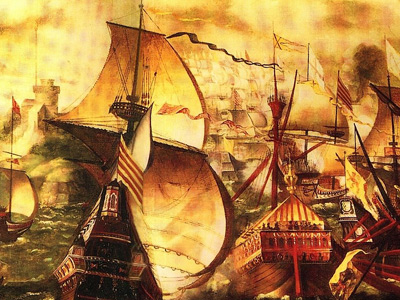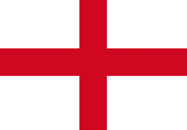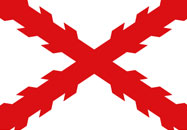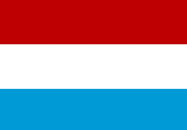Spanish Armada (1588)
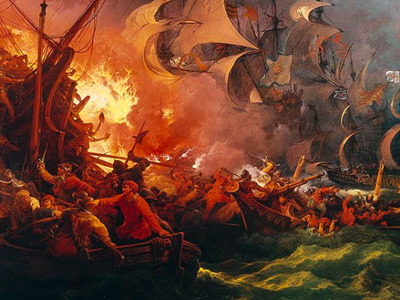
English Armada
The English fleet was still cautious of the remaining Armada after the Battle of Gravelines, requiring it to remain on duty even as some of its sailors died. The following year Elizabeth I launched the Counter Armada, under Sir Francis Drake, but it was unsuccessful in its goals, resulting in Spain The Spanish Empire was a colonial empire governed by Spain and its predecessor states between 1492 and 1976. One of the largest empires in history, it was the first to usher the European Age of Discovery and achieve a global scale, controlling vast territory. It was one of the most powerful empires of the early modern period, reaching its maximum extent in the 18th century. retaining naval superiority.
The Spanish Empire was a colonial empire governed by Spain and its predecessor states between 1492 and 1976. One of the largest empires in history, it was the first to usher the European Age of Discovery and achieve a global scale, controlling vast territory. It was one of the most powerful empires of the early modern period, reaching its maximum extent in the 18th century. retaining naval superiority.

Elizabeth I and the Spanish Armada; the Apothecaries painting, sometimes attributed to Nicholas Hilliard. A stylised depiction of key elements of the Armada story: the alarm beacons, Queen Elizabeth at Tilbury, and the sea battle at Gravelines

Elizabeth I and the Spanish Armada; the Apothecaries painting, sometimes attributed to Nicholas Hilliard. A stylised depiction of key elements of the Armada story: the alarm beacons, Queen Elizabeth at Tilbury, and the sea battle at Gravelines
( Click image to enlarge)
The Spanish failed to gain control of the Channel from the English, nor stop their intervention in the region of Flanders or their privateer transatlantic raids; however, for the sixteen years that the war continued, the English The Kingdom of England was a sovereign state on the island of Great Britain from about 927, when it emerged from various Anglo-Saxon kingdoms, until 1 May 1707, when it united with Scotland to form the Kingdom of Great Britain. The Viking invasions of the 9th century upset the balance of power between the English kingdoms, and native Anglo-Saxon life in general. The English lands were unified in the 10th century in a reconquest completed by King Æthelstan in 927. ultimately failed to disrupt the various fleets of the Indies, despite the great number of military personnel mobilised every year. The English were also unsuccessful in plots to support Portuguese separation from the Spanish crown. Spanish naval power not only continued its hegemony in the key trade routes but also in the creation of the Armada de Barlovento. An important fortification effort ensued in different fortifications at both sides of the Atlantic, notably in Cartagena or Portobelo. Despite the efforts by the English and Dutch
The Kingdom of England was a sovereign state on the island of Great Britain from about 927, when it emerged from various Anglo-Saxon kingdoms, until 1 May 1707, when it united with Scotland to form the Kingdom of Great Britain. The Viking invasions of the 9th century upset the balance of power between the English kingdoms, and native Anglo-Saxon life in general. The English lands were unified in the 10th century in a reconquest completed by King Æthelstan in 927. ultimately failed to disrupt the various fleets of the Indies, despite the great number of military personnel mobilised every year. The English were also unsuccessful in plots to support Portuguese separation from the Spanish crown. Spanish naval power not only continued its hegemony in the key trade routes but also in the creation of the Armada de Barlovento. An important fortification effort ensued in different fortifications at both sides of the Atlantic, notably in Cartagena or Portobelo. Despite the efforts by the English and Dutch The Dutch Republic was a confederation that existed from 1579, during the Dutch Revolt, to 1795. It was a predecessor state of the Netherlands and the first fully independent Dutch nation state. Although the state was small and contained only around 1.5 million inhabitants, it controlled a worldwide network of seafaring trade routes. The income from this trade allowed the Dutch Republic to compete militarily against much larger countries. It amassed a huge fleet of 2,000 ships, initially larger than the fleets of England and France combined., Spain remained the predominant power in Europe for several decades, thanks to sufficient financing and organization as well as superior technology to enhance its naval strength.
The Dutch Republic was a confederation that existed from 1579, during the Dutch Revolt, to 1795. It was a predecessor state of the Netherlands and the first fully independent Dutch nation state. Although the state was small and contained only around 1.5 million inhabitants, it controlled a worldwide network of seafaring trade routes. The income from this trade allowed the Dutch Republic to compete militarily against much larger countries. It amassed a huge fleet of 2,000 ships, initially larger than the fleets of England and France combined., Spain remained the predominant power in Europe for several decades, thanks to sufficient financing and organization as well as superior technology to enhance its naval strength.
HISTORY
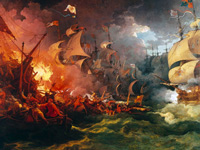
RESOURCES
This article uses material from the Wikipedia article "Spanish Armada", which is released under the Creative Commons Attribution-Share-Alike License 3.0.
© Stories Preschool. All Rights Reserved.
